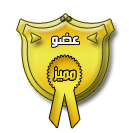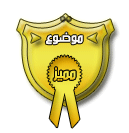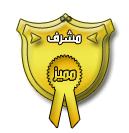
| التميز خلال 24 ساعة | |||
 العضو الأكثر نشاطاً هذا اليوم العضو الأكثر نشاطاً هذا اليوم  |
 الموضوع النشط هذا اليوم الموضوع النشط هذا اليوم  |
 المشرف المميزلهذا اليوم المشرف المميزلهذا اليوم  |
 المشرفة المميزه
المشرفة المميزه  |
قريبا |
بقلم :  |
 |
قريبا |
|
|||||||
 |
|
|
أدوات الموضوع | انواع عرض الموضوع |
|
|
|
#1
|
||||||||||||||||
|
||||||||||||||||

السلام عليكم ورحمة الله وبركاته
ستكون هذه الصفحة لمادة Knowledge Management لجميع مايتعلق بالمادة من محاضرات وبحوث واساينمنت وفقكم الله 
  |
|
|
#2 | |||||||||

|
Final Exam review Knowledge Management 1. Ground truth. Ground truth is a term used in remote; it refers to information collected on location. Ground truth allows image data to be related to real features and materials on the ground. The collection of ground-truth data enables calibration of remote-sensing data, and aids in the interpretation and analysis of what is being sensed. Examples include cartography, meteorology, analysis of aerial, satellite and other techniques in which data are gathered at a distance More specifically, ground truth may refer to a process in which a pixel on satellite image is compared to what is there in reality (at the present time) in order to verify the contents of the pixel on the image. In the case of a classified image, it allows supervised classification to help determine the accuracy of the classification performed by the remote sensing software and therefore minimize errors in the classification such as errors of commission and errors of omission. Ground truth is usually done on site, performing surface observations and measurements of various properties of the features of the ground resolution cells that are being studied on the remotely sensed digital image. It also involves taking geographic coordinates of the ground resolution cell with GPS technology and comparing those with the coordinates of the pixel being studied provided by the remote sensing software to understand and analyze the location errors and how it may affect a particular study. Ground truth is important in the initial supervised classification of an image. When the identity and location of land cover types are known through a combination of field work, maps, and personal experience these areas are known as training sites. The spectral characteristics of these areas are used to train the remote sensing software using decision rules for classifying the rest of the image. These decision rules such as Maximum Likelihood Classification, Parallelepiped Classification, and Minimum Distance Classification offer different techniques to classify an image. Another source of ground truth is the on-going work of the National Weather Service. They have a record of weather conditions stretching back for over 100 years. Observations are made at regular intervals at offices around the coun. These provide a nice record but are not necessarily taken at the same time a satellite passes over the spot. As clouds are very changeable, things can change completely in even a few minutes. 2. Sustainable competitive advantage . Sustainable competitive advantages are required for a company to thrive in today’s global environment. Value investors search for companies that are bargains. In order to avoid purchasing value one of the factors we search for is sustainable competitive advantages. Without one or more sustainable competitive advantages a company may not be able to recover from whatever caused the stock to become a bargain. We only want to buy the stocks of companies that are real value stocks, not value traps. In other words, we want to buy stocks trading below their intrinsic value and will grow cash flow for shareholders. Definition: Sustainable Competitive Advantages Sustainable competitive advantages are company assets, attributes, or abilities that are difficult to duplicate or exceed; and provide a superior or favorable long term position over competitors. Types and Examples of Sustainable Competitive Advantages Low Cost Provider/ Low pricing Economies of scale and efficient operations can help a company keep competition out by being the low cost provider. Being the low cost provider can be a significant barrier to en. In addition, low pricing done consistently can build brand loyalty be a huge competitive advantage (i.e. Wal-Mart). Market or Pricing Power A company that has the ability to increase prices without losing market share is said to have pricing power. Companies that have pricing power are usually taking advantage of high barriers to en or have earned the dominant position in their market. Powerful Brands It takes a large investment in time and money to build a brand. It takes very little to destroy it. A good brand is invaluable because it causes customers to prefer the brand over competitors. Being the market leader and having a great corporate reputation can be part of a powerful brand and a competitive advantage. Strong Balance Sheet / Cash Companies with low debt and/or lots of cash have the flexibility to make opportune investments and never have a problem with access to working capital, liquidity, or solvency. Value Investing and Sustainable Competitive Advantages Companies with one sustainable competitive advantage might be successful. Finding companies with multiple sustainable competitive advantages will greatly improve the chances you have found a real value stock. |
|||||||||

  |
|
|
#3 | |||||||||

|
The political economy of knowledge markets.
There really are no such things as pure market –markets that can be understood solely in economic terms. Every market system is embedded in and affect by social and political realities the value of anything exchanged depends strongly on the context of the transaction. The value of the money watch mainly social: it buys the owner status in a society that looks up to or envies people who can afford to purchase and display such items. Sociologist Harrison White has said that sociology, economies, and political science are the three lenses needed to see organizations fully no one discipline can capture their whole meaning. We strongly agree that social , economic and political realities must be taken fully into account to understand markets for knowledge . if the political reality of an organizations is such that calculating and secretive hoarders of knowledge thrive, then potential knowledge buyers will have no currency valuable enough to tempt them to share their expertise . Knowledge exchange will be minimal. If it is considered a sign of weakness or incompetence within the culture of an organization to admit to problem you can’t solve on your own, then the social cost of buying knowledge will be too high. Once again, the knowledge market will not operate well. At mobile oil, where disapproval of bragging is embedded in the culture, the efficiency of the knowledge market was reduced because knowledge owners are reluctant to advertise their knowledge and were distrusted by their colleagues if they did. While these cultural norms can have positive impact too , they inhibit internal knowledge markets we will look first at the players in the knowledge market: the buyers ,sellers and brokers who taken part in knowledge transaction and drive knowledge markets. 4. The price system. A price system in economics serves the function of regulating the production and consumption of goods by determining their monetary or trade value. There are three different types of price systems in economics: free, mixed and fixed. Each of these is characterized by the amount of control that forces outside of the market have on prices and especially the factors of production, which include land, labor and capital. All modern societies use price systems. Price systems motivate both consumers and producers to make decisions. For example, in most cases, a consumer will choose the product that is the least expensive, and producers choose to produce only products that will make profit. A price system informs both of these decisions without the producer and consumer having to communicate directly. In a free price system, prices are set naturally by supply and demand in the economy with no outside interference. The higher the demand for a product, the more incentive producers have to make it, but producers are also motivated to keep prices down to attract more consumers. This creates a situation in which both consumers and producers are motivated by price. In free price systems, competition among producers allows for prices to stabilize themselves. Free price systems create capitalism, which is distinguished as a market in which individuals are allowed to control all the factors of production, with no government intervention. Profits are unlimited in free price systems and are the primary motivation for producers. In a price system, the market is not left to its own devices; prices instead are controlled by forces outside of the economy. Fixed price systems occur in centrally planned economies where the government is in complete control of all of the factors of production. Supply and demand do not determine prices, rather the government planners decide what to produce, how much to produce and how much to charge. Although the government decides what to produce in this economy, it doesn’t change the needs of consumers, and this can result in scarcity of some items and a surplus of others. Fixed price systems are most common in countries that have communist or socialist governments. Fixed and free price systems are both extremes, one having no regulation and the other completely controlled by the government. Most nations cannot exist with a price system that is purely fixed or purely free. A mixed price system is a combination of these extremes and produces an economy with both government regulation and free enterprise. Most modern economies have a price system that falls somewhere between a free price system and a fixed price system. The United States is one example of a mixed price system that falls closer to the free market side, and countries such as China and Russia have price systems that are more fixed.
|
|||||||||

  |
|
|
#4 | |||||||||

|
6. Fusion in knowledge generation. Perhaps the most obvious are those that allow for the sharing of knowledge in the first place. It is only through the sharing of knowledge that we become aware of the gaps in our knowledge. In the case of many businesses and organizations it is critically necessary to be able to surface current knowledge and assumptions. It is particularly important to surface fundamental assumption (the tacit context within which the business operates), the unwritten rules of the organization. In many organizations there have been examples of traditional "knowledge" that has been handed down from one generation to the next. Sometimes this knowledge has been explicitly handed down in company manuals or in training sessions. More often than not, however, it has been embedded in company processes-hidden from view but very much there. Knowledge management tools can be used to surface this knowledge and make it available for critical scrutiny. The process of fusion, combining pieces of information to produce higher-quality information, knowledge, and understanding, is often poorly represented in constructive models and simulations that are used to analyze intelligence issues. This report describes one approach to capturing the fusion process in a constructive simulation, providing detailed examples to aid in further development and instantiation. The sequential fusion method in intended to determine whether separate intelligence observations are close enough geographically, have consistently identified the same battlefield entity, and contain high-quality information, all of which must be considered before fusion of intelligence can occur. The fusion process described in this report is, for the most part, an implicit representation of the generation of battlefield intelligence and can be used in a constructive simulation or fusion model to better understand the dynamics of intelligence-gathering systems and their effect on intelligence metrics. 7. Mapping and modeling knowledge. Well let’s assume you need to educate a team of professionals in some new software update, what is generally done is that they are filled into a classroom and someone walks in with a PPT or Document trains them and walks out assuming that all have been updated with the knowledge and all are educated. Now, what knowledge mapping does is helps you identify/analyze each activity that needs to be done during training or any knowledge related activity, you need to document each and every step and look closely to find that if you teach this what is the ultimate result............... will they learn faster if not the what is the better alternative............. how do I test that they have learned.......you document/map the entire activity end to end right from the moment the plan of education is conceived to the time when you are going to conduct skill assessment. Knowledge modeling is a process of creating a computer interpretable model of knowledge or standard specifications about a kind of process and/or about a kind of facility or product. The resulting knowledge model can only be computer interpretable when it is expressed in some knowledge representation language or data structure that enables the knowledge to be interpreted by software and to be stored in a database or data exchange file. Knowledge-based engineering or knowledge-aided design is a process of computer-aided usage of such knowledge models for the design of products, facilities or processes. The design of products or facilities then uses the knowledge model to guide the creation of the facility or product that need to be designed. In other words it used knowledge about a kind of object to create a product model of an (imaginary) individual object. Similarly, the design of a particular process implies the creation of a process model, which design activity can be guided by the knowledge that is contained in a knowledge model about such a kind of process. The resulting process model, product model or facility model is typically also stored in a database. Knowledge modeling includes the explication of knowledge and requirements that is available in documents, such as design manuals, (international) standard specifications and standard data sheets. In order to make such knowledge computer interpretable it need to be expressed in a formal knowledge representation language and thus transformed into a computer interpretable form. For example in the form of an expressions Gellish English. This enables that the knowledge and requirements are related to the objects in the knowledge model, whereas the whole model is again stored in a Database. |
|||||||||

  |
|
|
#5 | |||||||||

|
8. Capturing tacit knowledge Tacit knowledge (as opposed to formal or explicit knowledge) is the kind of knowledge that is difficult to transfer to another person by means of writing it down or verbalizing it. For example, stating to someone that London is in the United Kingdom is a piece of explicit knowledge that can be written down, transmitted, and understood by a recipient. However, the ability to speak a language, use algebra,[1] or design and use complex equipment requires all sorts of knowledge that is not always known explicitly, even by expert practitioners, and which is difficult to explicitly transfer to users. The term “tacit knowing” or “tacit knowledge” was first introduced into philosophy by Michael Polanyi in 1958 in his magnum opus Personal Knowledge. He famously introduces the idea in his later work The Tacit Dimension with the assertion that “we can know more than we can tell.”.[2] According to him, not only is there knowledge that cannot be adequately articulated by verbal means, but also all knowledge is rooted in tacit knowledge in the strong sense of that term. With tacit knowledge, people are not often aware of the knowledge they possess or how it can be valuable to others. Effective transfer of tacit knowledge generally requires extensive personal contact, regular interaction[3] and trust. This kind of knowledge can only be revealed through practice in a particular context and transmitted through social networks.[4] To some extent it is "captured" when the knowledge holder joins a network or a community of practice.[5] Another example of tacit knowledge is the ability to ride a bicycle. Some examples of daily activities and tacit knowledge are: riding a bike, playing the piano, driving a car, hitting a nail with a hammer[6] The formal knowledge of how to ride a bicycle is that in order to balance, if the bike falls to the left, one steers to the left. To turn right the rider first steers to the left, and then when the bike falls right, the rider steers to the right.[7] You may know explicitly how turning of the handle bars or steering wheel change the direction of a bike or car, but you cannot simultaneously focus on this and at the same time orientate yourself in traffic. One of the most convincing examples of tacit knowledge is facial recognition. ‘‘We know a person’s face, and can recognize it among a thousand, indeed a million. Yet we usually cannot tell how we recognize a face we know, so most of this cannot be put into words.’’. When you see a face you are not conscious about your knowledge of the individual features (eye, nose, mouth), but you see and recognize the face as a whole 9. Strategies for knowledge transfer. Sensitivity to diversity, an emphasis on open communication, and an understanding of the strengths and benefits of a multigenerational workforce are all competencies required of leaders operating in an organizational culture that encompasses four diverse generational cohorts. Based on the research that I have conducted within the aerospace indus, the following implications and strategies reflect knowledge transfer initiatives that may effectively help to transfer knowledge from baby boomer engineers to Generation X engineers. These management strategies center on areas such as (a) building a knowledge sharing culture, (b) establishing mentoring programs, and (b) initiating teamwork. Management actions can have a large influence on increasing employee engagement and affect the knowledge-sharing culture in the organization. Visible and engaged management support may enhance a knowledge-sharing culture. Management may influence employees by establishing a reason to care, a feeling employees are a part of something bigger than they are. Employees must perceive management visibly advocates and supports the creation of the structured mentoring program. The effectiveness of the mentoring program will require management support in the form of adequate funding and work redistribution where necessary. To facilitate the exchange, the mentor and mentees should be in close physical proximity to each other. Encourage, support, and facilitate the formation of teams within the workplace, combining members of all generations and functions whenever possible. Within the team environment, knowledge transfer and integration occurs between individuals. The result is a collective knowledge greater than any single individual could produce. Combining individuals with different and complementary skills and perspectives and achieving cooperation among them may result in the enhancement of optimal knowledge transfer if management recognizes the social or relationship aspect of team building. |
|||||||||

  |
 |
| الكلمات الدلالية (Tags) |
| knowledge, management |
«
الموضوع السابق
|
الموضوع التالي
»
| الذين يشاهدون محتوى الموضوع الآن : 1 ( الأعضاء 0 والزوار 1) | |
|
|
 المواضيع المتشابهه
المواضيع المتشابهه
|
||||
| الموضوع | كاتب الموضوع | المنتدى | مشاركات | آخر مشاركة |
| foundation knowledge management | antaumry | بكالوريوس . ماجستير ( إدارة أعمال ) | 2 | 01-04-2019 10:22 PM |
| Marketing Management 4th | antaumry | بكالوريوس . ماجستير ( إدارة أعمال ) | 0 | 07-22-2014 03:00 PM |
| Marketing Management 3rd | antaumry | بكالوريوس . ماجستير ( إدارة أعمال ) | 0 | 07-21-2014 02:52 PM |
| Marketing Management 2nd | antaumry | بكالوريوس . ماجستير ( إدارة أعمال ) | 0 | 07-21-2014 02:46 PM |
| Engineering Vs Management | Ahmed | التحاضير المدرسيه واللغات | 2 | 10-08-2006 05:29 PM |
الساعة الآن 12:18 AM.
هذا الموقع يستعمل منتجات MARCO1









 العرض المتطور
العرض المتطور

